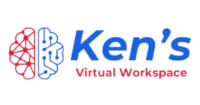1. VMware Workspace ONE:
VMware Workspace ONE is a robust UEM platform known for its comprehensive endpoint management capabilities and integration with VMware’s ecosystem. Here are its key capabilities:
- Device Management: Supports a wide range of devices including Windows, macOS, iOS, Android, and Chrome OS. It offers features like device enrollment, provisioning, configuration management, and remote troubleshooting.
- Application Management: Provides application lifecycle management, app distribution, and compatibility testing across various platforms. It supports both native and web applications.
- Security Features: Implements strong security measures such as conditional access policies, encryption, secure app tunnels, and compliance enforcement based on device posture.
- Integration: Seamless integration with VMware Horizon for virtual desktop infrastructure (VDI) and VMware Workspace ONE Access for identity and access management.
2. Microsoft Endpoint Manager:
Formerly known as Microsoft Intune, Microsoft Endpoint Manager integrates Configuration Manager and Intune into a single UEM solution. Its capabilities include:
- Device and App Management: Supports Windows, macOS, iOS, and Android devices. Provides management for device configuration, app deployment, and updates.
- Security and Compliance: Implements Microsoft security baselines, conditional access policies, data protection (encryption, DLP), and compliance reporting based on Azure Active Directory.
- Integration with Microsoft 365: Tight integration with Microsoft 365 services such as Azure AD, Microsoft Defender for Endpoint, and Microsoft Endpoint Configuration Manager.
- Automation and Productivity: Offers automation through PowerShell scripting, endpoint analytics for performance insights, and productivity features like Microsoft Endpoint Analytics and Desktop Analytics.
3. Citrix Endpoint Management:
Citrix Endpoint Management, part of Citrix Workspace, focuses on delivering secure access to apps and data across devices. Its capabilities include:
- Device Support: Manages iOS, Android, Windows, and macOS devices. Provides unified management for mobile devices (MDM) and application management (MAM).
- App Management: Offers secure delivery of mobile apps, productivity apps, and virtual apps through Citrix Virtual Apps and Desktops integration.
- Security Features: Implements containerization for separating personal and work data, network security controls, and compliance enforcement. Integrates with Citrix Secure Workspace Access for secure app delivery.
- Analytics and Insights: Provides visibility into device and app usage, performance metrics, and compliance status through Citrix Analytics.
Recommendations:
Financial Considerations:
- VMware Workspace ONE: Best suited for organizations heavily invested in VMware infrastructure seeking comprehensive endpoint management with strong integration capabilities.
- Microsoft Endpoint Manager: Ideal for organizations deeply integrated with Microsoft 365 services, leveraging Azure AD for identity management and prioritizing Microsoft ecosystem features.
- Citrix Endpoint Management: Recommended for organizations needing secure application delivery across devices, especially those already using Citrix Workspace for virtual apps and desktops.
Software Skill Chains:
- VMware Workspace ONE: Recommended when seamless integration with VMware infrastructure (vSphere, Horizon) is essential, and robust endpoint security and management are priorities.
- Microsoft Endpoint Manager: Suitable for organizations leveraging Microsoft 365 and Azure services, prioritizing ease of use with existing Microsoft tools, and requiring strong compliance and security features.
- Citrix Endpoint Management: Advisable for organizations needing secure application delivery and data separation in a mobile-first environment, especially those utilizing Citrix Virtual Apps and Desktops.
Conclusion:
Choosing the right UEM system in Kenya depends on your organization’s specific needs, existing IT infrastructure, security requirements, and budget considerations. Each platform offers unique strengths tailored to different operational environments. Evaluating these factors alongside financial implications and software skill chains will help determine the most suitable UEM solution to optimize endpoint management and security effectively.



